Assembly Pictorial
Cheap 16 inch diameter | 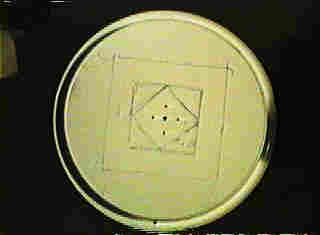
|
Drilling holes using
| 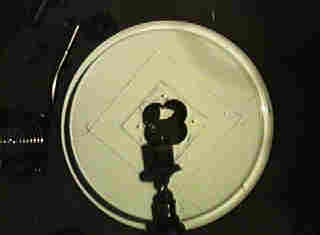
|
Nibbling away at the
| 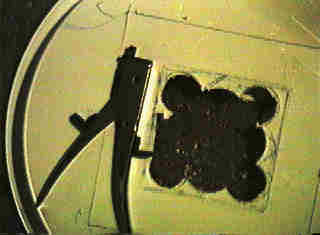
|
Checking the fan
| 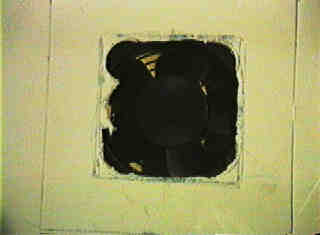
|
Filter A La Plate
Note black gasket material
| 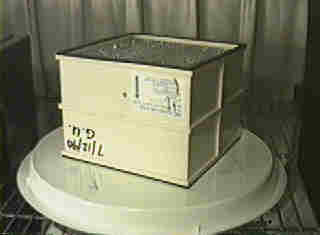
|
Filter working on a wire
| 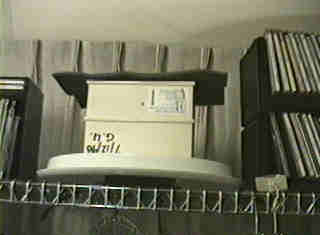
|
Some kinds of HEPA filters can be bought in medical specialty stores, while others are sold in paint and hardware stores, and industrial safety supply houses. The term HEPA refers to a standard level of filtration, regardless of what the application of the filter is for. The industrial safety supply house will probably have a far larger variety of sizes and configurations, and will probably be a lot cheaper for the same quality filtration. You can find them in the Yellow Pages of almost any metropolitan area. Or check Big Yellow, a web based yellow pages for Industrial Safety in your state.
Since most medical filter gadget companies are going to be a bit expensive, and all that one of these things is, is a filter with a fan on it, you should be able to build your own for little more than the price of a fan and some sheet plastic or metal. And of course, a HEPA filter.
The difference in the quality of your air will depend upon how much air you move through that filter. We are going to start out with a simple equipment equipment "boxer" type fan for this project. If you go hunting in the surplus places or catalogs, you can find more powerful fans. Prices will vary.
The basic design is simple. A HEPA filter of just about any kind sits atop a sheet of plexiglas, acrylic plastic, or smooth sheet metal that serves as a base plate to which everything is mounted. A five inch diameter Radio Shack computer equipment type fan (the 120 volt variety, typical brands are Rotron, Muffin, Toyo, etc.) is bolted to the bottom. (You can get that at many surplus electronics places as well, just watch that they are 120 volt units, not 240, 260, or 12 volt units.) Holes in the base plate let air flow from the filter out through the fan. The plate is held up by any kind of legs you can bolt to the plate. (I put mine on a wire rack shelf instead.)
***************
* HEPA *
* FILTER *
***************
========== ============== "Base Plate"
| /////////// |
| ////FAN//// |
| | - Legs
The HEPA filter cartridges, at least the boxy kind, often have a little foam gasket on the bottom. That will establish an adequate seal to the smooth plastic or metal sheet of the base plate if you just put the filter down on it. This means that almost ANY reasonable sized filter cartridge will work! The suction of the fan blowing down will further help hold the filter in place.
This design will give you more freedom to take advantage of what you can find on the open or surplus market. My filter came from a large scale computer system, where it was designed to keep dust, pollen, and tobbaco smoke from destroying the disk drives. Some suggest that in a pinch, you can even lay "microwave safe" type paper towels or coffee filters across the plate to reduce polllen and other types of dust if you don't have a HEPA filter yet.
There are, of course, other kinds of filters. Some have activated charcoal, potassium permanganate, or other material instead of or in place of the HEPA filter material. Whre the air flow is more restricted, a higher power fan, or possibly stacked fans, may be more appropriate. See also Zeolite for information about another kind of air purification material, one that is active in the chemical breakdown of the chemicals causeing some kinds of odors.
Worst part about this design, is that the fan blows down; you might want to set it on a small table rather than on the floor. Or use longer legs. No, you can't just reverse the fan. Not unless you turn the whole thing upside down, and put the feet on the filter. The fan has to suck air through the filter, not blow air in to the filter. Part of that is so the suction will hold the filter in place, and part because fans have less loading sucking rather than pushing.
Cheap 16 inch diameter | 
|
Drilling holes using
| 
|
Nibbling away at the
| 
|
Checking the fan
| 
|
Filter A La Plate
Note black gasket material
| 
|
Filter working on a wire
| 
|
MCS
CHAT
| For your web space and web photography needs, contact webmaster@mall-net.com |
Allergy Index
|